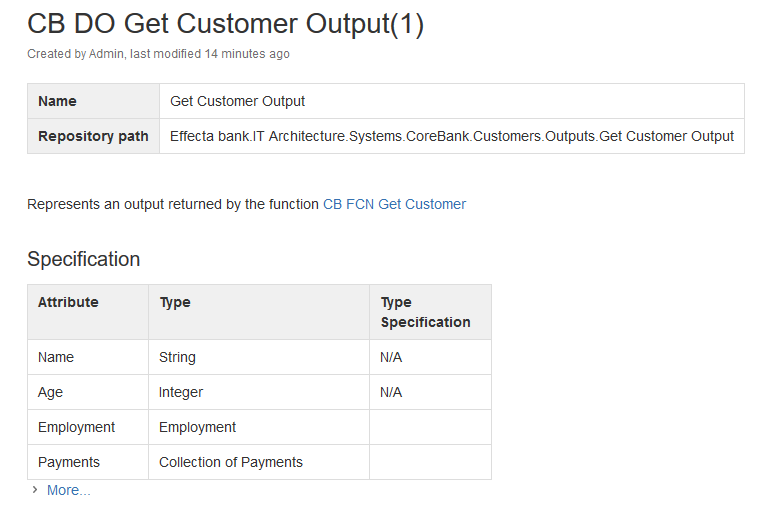Data Object
Data object represents a data structure, so its specification includes basically just a listing of data attributes and their types which are automatically generated from the Enterprise Architect:

Unlike domain objects which have a meaning as they represent real-world objects, data objects are just "data containers" that are passed to a service or function as an argument. Therefore, data objects do not have any meaningful description, so it could be omitted.
Complex Data Structures
The example above presents a simple data object which consists just of attributes of primitive types (String, Integer, Boolean, etc.). However, inputs and outputs could be complex structures composed of multiple nested data objects. For example, the following data object includes nested data object Employment and a collection of Payment data objects:

There are two different ways to present such complex data structures. The first approach expands all child objects to a flat structure and describes them in one place:

The downside is a duplication if the data object is included in the parent object multiple times.
Another alternative is to describe the nested data objects separately. This ensures that the child objects are always documented once, but it requires the reader to manually look for the specification of the nested objects:

The last option is to use a simplified plain-text representation:


